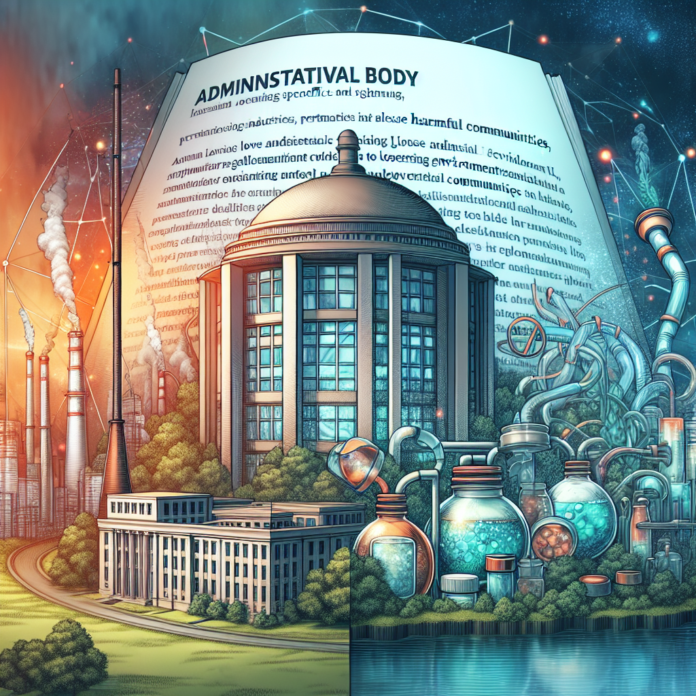Trump’s EPA Gives Polluters Free Rein Over Toxic Chemicals in Communities
Trump’s EPA Seeks to Allow Polluters to Contaminate Communities with Hazardous Chemicals
The Environmental Protection Agency (EPA) under the Trump administration has made moves that critics say could give polluting industries a significant advantage, potentially jeopardizing public health and the environment. This initiative is seen as a bid to relax regulations on toxic chemical emissions, raising concerns among environmental advocates and community leaders.
Changes to Regulatory Framework
One of the most controversial proposals involves the alteration of risk assessment procedures used to evaluate the safety of chemicals. By simplifying these assessments, the EPA aims to expedite the approval process for new industrial chemicals, which could lead to inadequate scrutiny of their potential harm. This shift could effectively lower the bar for the introduction of hazardous substances into the marketplace.
Impact on Vulnerable Communities
The ramifications of these changes are particularly concerning for communities already bearing the brunt of pollution. Low-income neighborhoods and areas predominantly inhabited by people of color are often situated near industrial sites. The EPA’s relaxed guidelines could exacerbate existing health disparities, increasing exposure to toxic chemicals that are linked to serious health issues, including respiratory problems, cancer, and developmental disorders in children.
Industry Influence and Advocacy
The push for deregulation has been heavily influenced by the chemical industry, which has long advocated for fewer restrictions on the use of their products. Critics argue that this cozy relationship between the EPA and polluting industries undermines the agency’s mission to protect public health and the environment. Lobbying efforts have intensified, as companies seek to capitalize on the opportunity to operate with fewer constraints.
Concerns from Environmental Groups
Environmental organizations have voiced strong opposition to the Trump administration’s approach, warning that it threatens not only public health but also the integrity of environmental protections established over decades. Groups like the Center for International Environmental Law have called for a thorough reevaluation of the proposed changes, emphasizing the need for rigorous safety assessments and stronger oversight to safeguard communities from toxic exposure.
Legal and Legislative Responses
In response to these regulatory rollbacks, various state governments and advocacy groups are mobilizing to challenge the EPA’s decisions. Legal actions may arise, aimed at reinstating stricter controls on chemical emissions and holding polluters accountable for their impact on public health. Additionally, there is a growing movement among lawmakers to introduce new legislation that reinforces environmental protections and prioritizes community health over industrial interests.
The Future of Environmental Regulation
As the debate over environmental regulation continues, the long-term consequences of the Trump-era policies remain to be seen. The balance between economic growth and environmental stewardship is a contentious issue, but it is imperative that the health of communities and ecosystems is prioritized. Public engagement and advocacy will be crucial in shaping the future of environmental policy and ensuring that vulnerable populations are protected from the dangers of toxic pollution.
In summary, the Trump administration’s EPA actions raise significant concerns about the potential for increased pollution and health risks in communities across the nation. As stakeholders from various sectors weigh in, the conversation about environmental protection and public health is more critical than ever.


